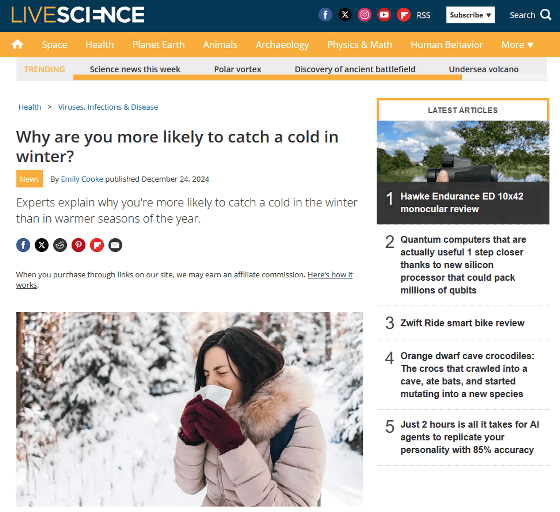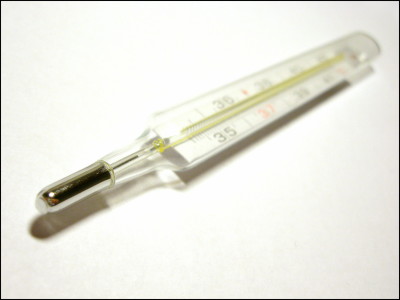Why do colds and flu become more prevalent in the winter?

Many people know that colds, influenza, and COVID-19 are prevalent in the winter, but some may not know why infectious diseases are prevalent in the winter. Live Science, a science media outlet, explains the question, 'Why do infectious diseases become prevalent in the winter?'
Why are you more likely to catch a cold in winter? | Live Science

Viruses that cause respiratory infections like colds and flu are contained in droplets that are expelled when an infected person sneezes, coughs, or talks. You can become infected if these droplets enter someone else's body directly, or if you touch a surface or object contaminated by the droplets and the virus enters through your mouth or nose.
In temperate regions, including Japan, respiratory infections peak in winter, a phenomenon that is sometimes explained by the fact that people spend more time indoors with others in winter and there is less ventilation, making it easier for viruses to spread within groups.
However, some people may think, 'It's not just because it's winter that we spend more time indoors, and we don't ventilate the house as much as we do in summer.' According to Live Science, the reason why people are more likely to catch colds in winter is not only due to behavioral changes, but also to clear changes in biological mechanisms.

The EVs contain 20 times more receptors than normal cells, and 13 times more microRNA that prevents viruses from copying and replicating their genetic material, preventing the virus from replicating and invading cells.
When a person goes from a warm room to the cold outdoors, the temperature of the nostrils drops sharply from 37 to 32 degrees Celsius. A 2022 study applied a similar temperature drop to nasal tissue samples to observe the immune response, finding that the amount of extracellular vesicles secreted by epithelial cells was reduced by 42%, and receptors and microRNAs were reduced by more than half. As a result, respiratory viruses were found to have a substantially doubled ability to replicate.
New research reveals why colds and flu become more prevalent in winter - GIGAZINE

The results of this study suggest that wearing a mask or other covering on the face has the dual benefit of preventing viruses from entering the nose and mouth, as well as creating a layer of air in front of the nose that warms the nasal epithelial cells and prevents a decline in immune function.
In addition to drops in temperature, changes in humidity also affect the infectivity of viruses. Generally, in winter, people use heaters and air conditioners to warm up cold air indoors, but even if the amount of water vapor contained per volume is the same, as the temperature rises, the amount of saturated water vapor in the air increases and the relative humidity decreases. The 'humidity' you hear about in weather forecasts refers to relative humidity, so it can be said that the humidity inside winter rooms is lower than in summer.
A 2019 study found that mice living in a dry environment with a relative humidity of 10-20% were less able to fight influenza infection than mice living in a relative humidity of 50%. This is because the defense mechanism known as mucociliary clearance (MCC), which uses cilia on epithelial cells to eliminate particles such as viruses, becomes less effective as the body dries out.
Although the above studies were conducted in mice, similar research in humans suggests that dry conditions may reduce the ability of cilia to filter out pathogens, making infections more likely to spread.
Akiko Iwasaki , a professor of immunology at Yale University and author of the 2019 study, believes keeping spaces like your home, office, or school humid during the winter is important to maintain immune function. Ideally, indoor relative humidity should be between 40 and 60 percent, Iwasaki advised.

Related Posts:
in Science, Posted by log1h_ik






